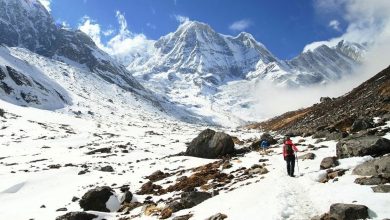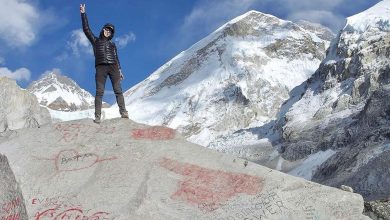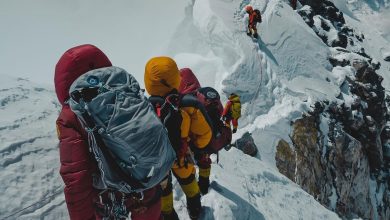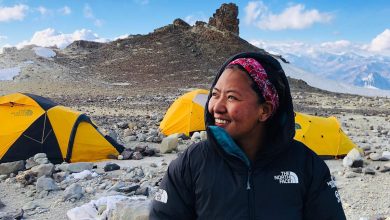Kilimanjaro vs Everest Base Camp Trek
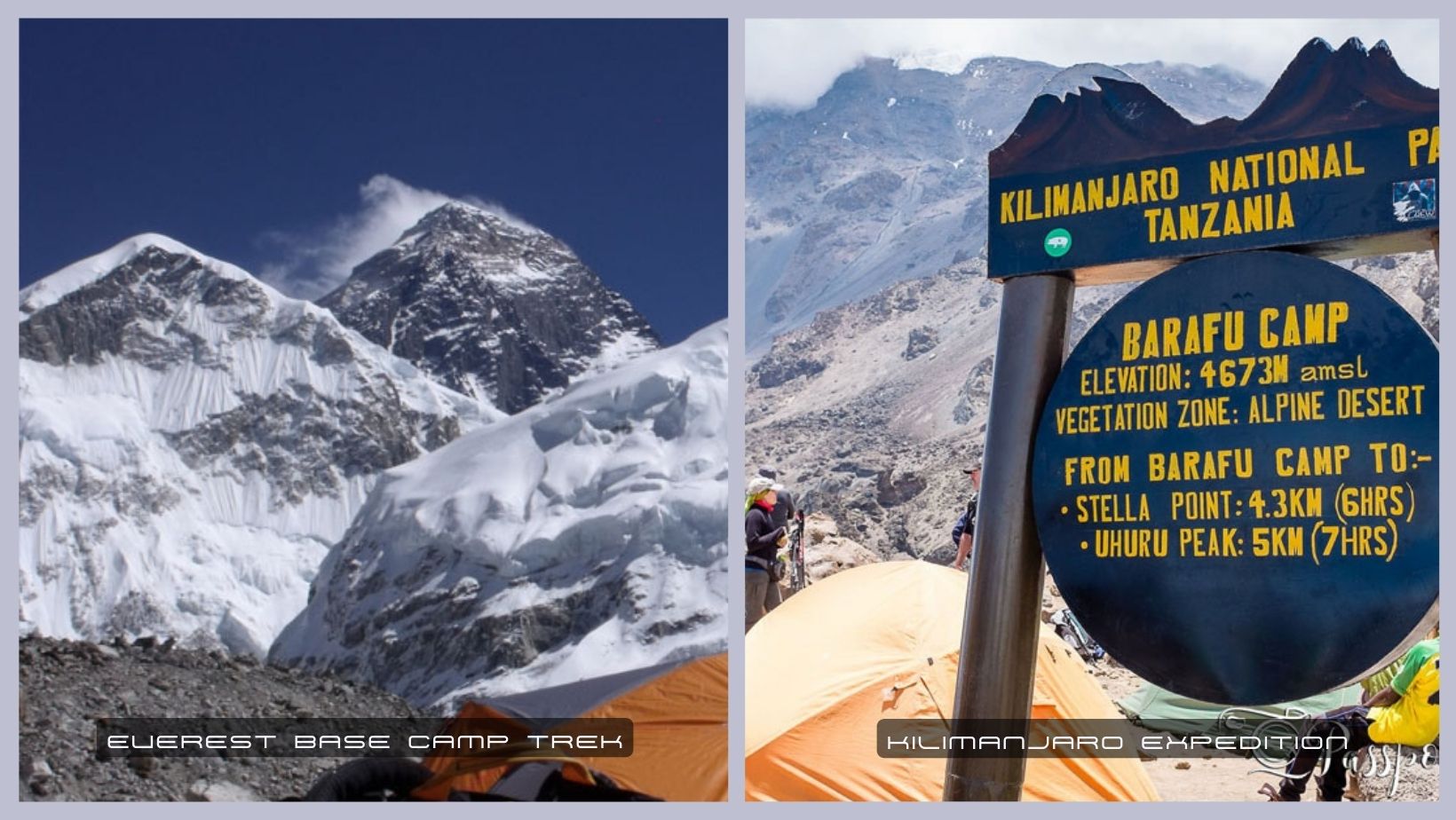
Which is the best trekking destination on Kilimanjaro vs Everest Base Camp Trek? Probably, it all depends on the interests and preferences of the trekkers. But both of these destinations are popular places to visit as they come with several opportunities like cultural immersion, natural beauty, and many others. While Kilimanjaro offers the experiences around African region, people, and lifestyle, Everest Base Camp Trek gives you an insights on the Himalayan experience and its beauty. Kilimanjaro is the tallest peak in Africa while EBC is the starting point of Everest Expedition. Both of them comes with vast difference and experience, of which we will be discussing on some of them. Let’s explore in detail and find out which package better suits you.
Exploring Kilimanjaro | Africa’s Highest Peak
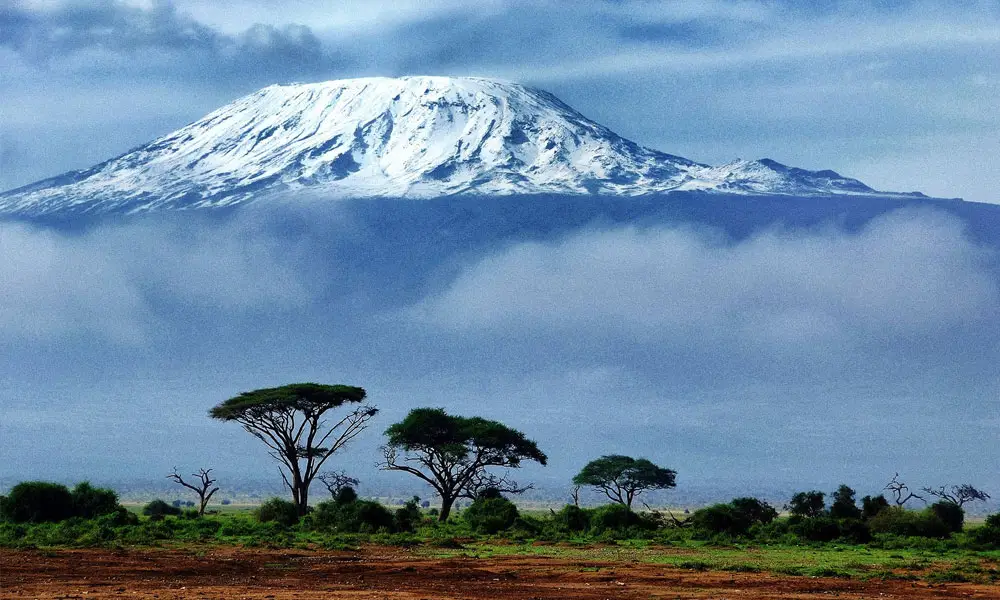
One of the famous aspect about Mount Kilimanjaro is it is the tallest peak in the continent of Africa. The beautiful peak is located in an African country, Tanzania. It is the world’s largest free-standing mountain rise. It means that it does not belong to any mountain ranges like Mount Everest or Kanchenjunga. Mount Kilimanjaro is a volcanic mountain and is often called ‘Stratovolcano.’ It has three distinctive parts; Kibo, Mawenzi, and Shira. Kibo means the top or the summit of the mountain. The Mawenzi and Shira are extinct now.
Mount Kilimanjaro stands at a towering height of 5,895 meters (19,340 feet) above sea level. It is believed that the volcano erupted nearly 360,000 years ago in Mount Kilimanjaro, creating a Kibo’s crater rim. It is called Udhuru which means ‘freedom’ in Swahili. Though the mountain features snow-capped regions, scientists believe that the snow might disappear by next 20 years.
Mount Kilimanjaro offers several routes to its peak. Some of them are; Marangu, Machame, Lemosho, Rongai, and Umbwe routes. One of the unique aspects of the Roof of Africa is its diverse climate. Located in East Africa, the nearby regions of this mountain offers several climatic characteristics like ecological zones, including tropical rainforest, heath, moorland, alpine desert, and finally, the arctic zone near the summit. With this, the region is rich in flora and fauna. The lower range of this mountain has a great line of dense rainforests that is home to several animals like elephants, wild buffalos, and colobus monkeys.
Highlights of the journey to the “Roof of Africa”
- Majestic Summit at 5,895 meters (19,341 feet) above sea level.
- Ecological Diversity includes lush rainforests, heathlands, moorlands, and alpine deserts.
- Pristine Scenery, with the views of the sunrise or sunset from the summit of Kilimanjaro.
- Unique Wildlife includes elephants, buffalos, colobus monkeys, and numerous bird species.
- Cultural Immersion such as exploring the Chagga and Maasai tribes and exploring the vibrant Tanzanian culture.
- Diverse Trekking Routes like the Machame or Lemosho Route.
- Inspiring Landscapes range from the rugged volcanic terrain to expansive glaciers near the summit.
- Ndoro and Materuni Waterfalls
- Views of Furtwangler Glacier and Credner Glacier
- Diverse flora and fauna within Amboseli National Park
Trekking to Everest Base Camp
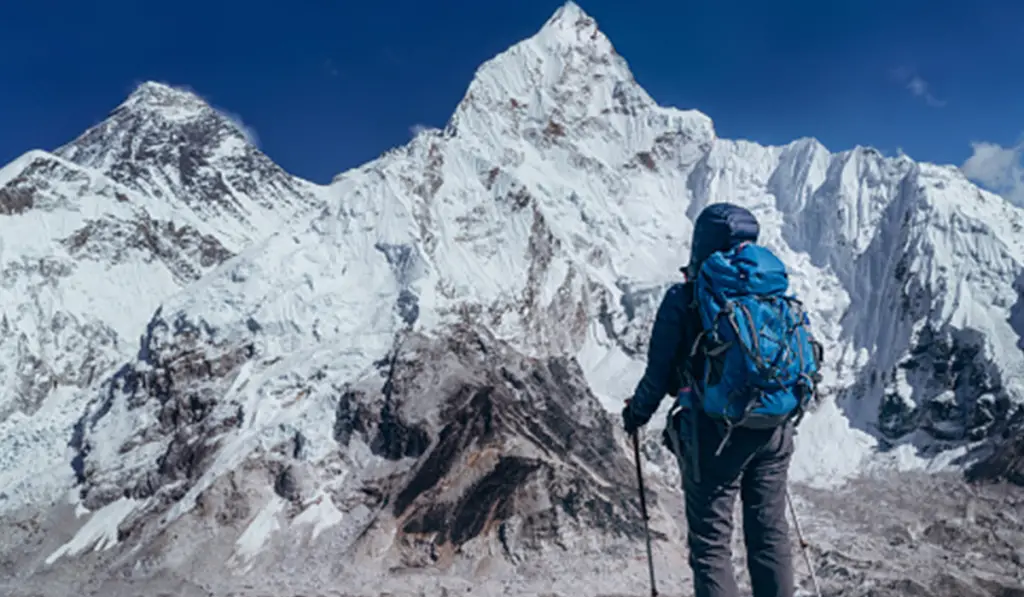
Everest Base Camp is a lower base of the highest peak in the world, Mount Everest. There are two base camps that sits at the lap of the mighty Everest; one in Tibet and another in Nepal. Everest Base Camp in Tibet side is referred as the North Base Camp while the Base Camp in Nepal is called South Base Camp.
Everest Base Camp in Nepal or the South Base Camp is the point where the Everest Expeditions start. Every climbers who opt for Nepal’s route to scale the peak must reach the base camp before the campaign starts. EBC (the South Base Camp) is located in Solukhumbu District of Nepal. It lies within the Sagarmatha National Park of Khumbu Region, that offers a pristine overview of the Himalayan environment.
Everest Base Camp stands at an elevation of 5,364 meters (17,598 ft) above sea level (Read article: How High Is Everest Base Camp?), which offers an adventurous trek to any hiking enthusiast. There is a route from Lukla to reach this base camp, which takes around 12 to 14 days on average. Along the way, trekkers can enjoy the diverse Sherpa settlements rich in culture and traditions. The Buddhist religion and its significance in the Khumbu Region meets your cultural immersion expectations while the vibrant natural richness including dense green forests, streams, glaciers, and lakes will blow your mind.
One of the main and most attracting aspects of Everest Base Camp Trek is the 360 views of the Himalayas. Popular peaks like Mount Everest, Lhotse, Cho Oyu, Ama Dablam, Island Peak, and many more offers a spectacular views. Moreover, the Imje Valley, which is home to Imja River and lake is rich in Alpine Environment features.
The lower base or the initial settlements to Everest Base Camp are rich in green vegetation, offering home to hundreds of species of flora and fauna. Endangered animals like the Himalayan Tahr, Blue Sheep, Snow Leopard, and Red Panda can be spotted in the region.
Highlights of Everest Base Camp Trek
- Breathtaking 360 Views of the Himalayas, including Mount Everest, Lhotse, Nuptse, and Ama Dablam.
- Sherpa Culture and Hospitality around the settlements of Phakding, Namche, Tengboche, Dingboche, Pangboche, and Gorakshep.
- Exploring Gate to Everest, Namche Bazaar, and the highest hotel in the world, Hotel Everest View.
- Visit Tengboche Monastery at 3,867 meters (12,687 feet) and Pangboche Monastery. They are two ancient Buddhist Monasteries in the Khumbu region that offers insights into Tibetan Buddhism.
- Perfect Views of Khumbu Glacier and Icefall.
- Sherpa Villages and Scenic Landscapes, including Pangboche, Dingboche, and Lobuche. Exploring the traditional mountain lifestyle around these villages is worth it.
- Diverse Flora and Fauna at Sagarmatha National Park, a UNESCO World Heritage Site.
- High-Altitude Experience as EBC Trek takes trekkers to 5,364 meters above sea level.
- Exploring Kala Patthar at 5,545 meters above sea level.
Quick Differences: Kilimanjaro vs Everest Base Camp Trek
Details |
Mount Kilimanjaro |
Everest Base Camp |
| Alternative Name | Roof of Africa | South Base Camp (Mount To Everest) |
| Altitude | 5,895 meters (19,340 feet) | 5,364 meters (17,598 ft) |
| Location | Tanzania, Africa | Nepal, Asia |
| Routes | Machame/Lemosho Route | Lukla/Namche Bazaar Route |
| Local Tribes | Chagga and Maasai | Sherpa |
| Religion | Believes in Ruwa God | Buddhist |
| Flora & Fauna | Elephants, Wild Buffalos, and Colobus Monkeys | Snow Leopard, Himalayan Tahr, Red Panda, Danphe Pheasant |
Difficulty Level of Kilimanjaro vs Everest Base Camp Trek
Mount Kilimanjaro is a challenging mountain to climb. The first and foremost thing that aligns with its difficulty is towering height of 5,895 meters, which is quite hard to climb. Second, the weather condition around the peak is dynamic, which makes the navigation more challenging. Reports cite that 50% of the total climbers of Mount Kilimanjaro suffer from Altitude Sickness.
But if you see from the technical challenges, Mount Kilimanjaro is not much difficult to travel. It is not steep as Everest Base Camp region, making it more accessible place than Everest Base Camp. Being that said, the night times around Kilimanjaro can be harsh as it features fast-paced winds and cool temperatures. Nevertheless, if we keep Kilimanjaro and Everest Base Camp Trek, Mount Kilimanjaro comes up as a ‘easy’ journey.
On the other hand, Everest Base Camp Trek is itself a moderately challenging trek. Since the EBC Trail stretches to the most remote parts of Nepal, the trek is physically demanding. And if you add up other nearby locations, such as Cho La Pass and Genjo La Pass, technical skills are required.
The elevation of 5,364 meters makes Everest Base Camp challenging. Similarly, the dynamic weather condition, rugged trails, and steep landscapes make it more complicated. Due to the extreme weather and high altitude, most of the trekkers are prone to altitude sickness. Similarly, chances of getting injured and natural hazards are more in Everest Base Camp Trek than Mount Kilimanjaro.
Quick Differences
Details |
Kilimanjaro |
Everest Base Camp |
| Difficulty Level | Technically Moderate | Moderately Challenging |
| Challenges | Weather/High Altitude | Rugged Trails/High Altitude/Steepy Trails/Extreme Weather |
Distance And Durationof Trek | Kilimanjaro vs Everest Base Camp Trek

We have already covered the difficulty level of Kilimanjaro vs Everest Base Camp Trek. Now lets dive into the total distance and duration of these treks.
Everest Base Camp Trek covers a total distance of 130 kilometers (80.7 miles). The trek starts from Lukla at 2860 meters above sea level. It is home to Tenzing Norgay Airport, one of the most dangerous airports in the world. The trail stretches to the remote villages of Phakding and to Namche Bazaar. It takes trekkers to the remote and off-beaten paths of Nurning, Tengboche, Dingboche, Pangboche, Pheriche, Imja Valley, and Gorakshep before reaching Everest Base Camp.
On the other hand, Mount Kilimanjaro trek/climb trail has a total distance of 23 miles (37 kilometers). The Kilimanjaro trek starts from Umbwe and the distance is measured from Umbwe to Kilimanjaro Base Camp at 2300 meters above sea level.
Concerning the duration of trek to these two beautiful destinations, it is clear that Everest Base Camp requires more time and energy. Since the distance of Everest Base Camp trail is way more longer than Mount Kilimanjaro Trail, EBC Trek requires more time to complete. The average duration of Everest Base Camp trek is around 12 to 14 days. On the contrast, Mount Kilimanjaro Trek only requires around 5 to 7 days on average.
Besides, there are several trekking options nearby Everest Base Camp. They are:
- Gokyo Lake And Gokyo-Ri Trek
- Everest Three Passes Trek
- Everest Base Camp Trek with Helicopter Return
Apart from these, the duration of the trek is also highly influenced by the itineraries of the package. It might differ from one trekking agency to the other. But if we look from the surface, Mount Kilimanjaro is short-lived trek than Everest Base Camp Trek.
Quick Differences
Details |
Kilimanjaro |
Everest Base Camp |
| Distance in Mile | 23 miles | 80.7 miles |
| Distance in Kilometer | 37 kilometers | 130 kilometers |
| Duration | 5-7 Days (Average) | 12-14 Days (Average) |
Cost Consideration
The cost of Kilimanjaro vs Everest Base Camp Trek offers a comparative description of average cost required for the trek. It offers you a tips on preparing with the capital and required expenses during the trek. Lets find out which trek is more expensive and which one is budget-friendly.
Everest Base Camp Trek is a long trek than Mount Kilimanjaro, so if we peek on the daily expenses, EBC trek simply comes with higher amount. We can simply compare the average cost of 5 days trek (Kilimanjaro) and 14 days trek (EBC). The 14 days trek will be more costlier than the 5 days trek. But scenario is much different here. Everest Base Camp Trek is just a trek but Kilimanjaro is an expedition. As we all know that Mountain Expedition costs more than trek, Kilimanjaro comes with more expenses than Everest Base Camp Trek.
The average cost of Everest Base Camp Trek is above $1000 per person. The price tag may range anywhere between $1,300 to $1,600. The cost includes the accommodation, transportation, permit fees, and daily expenses required on the trail. However, it does not include international flight cost or any other personal expenses.
Talking about Kilimanjaro cost, the average cost comes around $2,000 to $6,000. It includes the climbing permit fees, transportation, and accommodation. The cost will be more since the preparation with gear and equipment are all on climbers themselves.
Quick Differences
Details |
Kilimanjaro |
Everest Base Camp |
| Cost | $2,000 to $6,000 | $1,300 to $1,600 |
Which Is More Physically Demanding? Kilimanjaro vs Everest Base Camp Trek
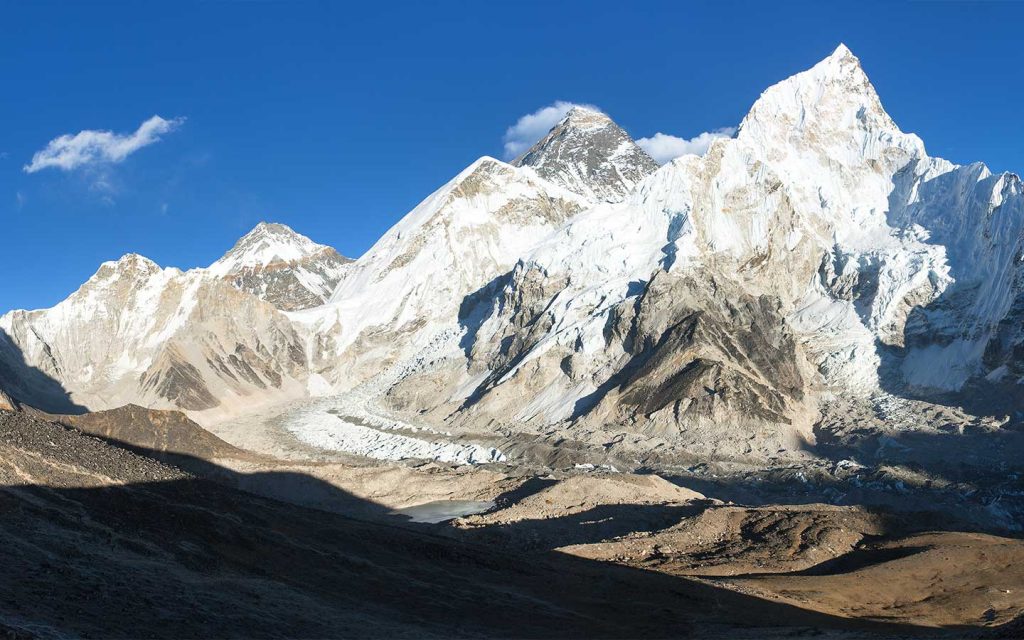
To be fair Everest Base Camp Trek appears more physically demanding. Since the distance of EBC Trail is longer and it lies in one of the most remote region in the world, EBC Trek is considered physically challenging than Kilimanjaro.
We have already mentioned that Kilimanjaro has only 5-7 days of itinerary while EBC Trek has 12 to 14 days itinerary on average. Everest Base Camp Trek offers a hike through the wilderness of the classic traditional settlements featured with seasonal rugged routes. The climate is more harsh with temperature dropping below 0 Degrees Celsius at night times. Similarly, it is more prone to avalanches, rock falls, and other natural calamities, which keeps it more ahead in terms of physical challenges.
While Mount Kilimanjaro also comes with the same challenges, travelers do not have to encounter such difficulties for a long period. But that does not mean that Mount Kilimanjaro is easy – it is still a challenging package. But it is an easier than Everest Base Camp Trek. The well established routes around Mount Kilimanjaro makes the journey more convenient than EBC trek. So the modernization and development has played a vital role here.
Required Gear and Equipments for the Trek

The first important thing to know about Kilimanjaro vs Everest Base Camp Trek is that these two packages are completely different from one another. Kilimanjaro is an expedition while EBC Trek is just a trek rather than a real expedition. So there will certainly be differences in essential gear and equipments.
Here are the lists for required gears for Kilimanjaro and Everest Base Camp Trek:
Kilimanjaro Gears |
Everest Base Camp Trek Gears |
| Base and Insulating Layers like Fleece jackets or down jackets | Thermal Layers (inner and outer) |
| Warm hat and gloves | Hat, gloves, and socks |
| Hiking and mountaineering boots | Backpack and duffle bags |
| Backpack and duffle bags | Sleeping bags/sleeping pad |
| Sleeping bags/sleeping pad | Trekking poles |
| Trekking poles | Hiking boots |
| Sunglasses and sunscreen | Sunglasses and sunscreen |
| Ice Axes | Tents |
| Crampons | |
| Climbing Ropes and accessories like gaiters |
Success Rate of Kilimanjaro vs Everest Base Camp Trek
After all the comparison of Kilimanjaro vs Everest Base Camp Trek, what is the success rate of these destinations. Which destinations offers more success ratio to its visitors? And what does the statistics say? Lets find out here!
Everest Base Camp Trek has a success rate of 90% as of this writing. On the other hand, Mount Kilimanjaro’s success rate ranges between 50% to 90%. This clearly shows that Everest Base Camp Trek has more success rate than Mount Kilimanjaro.
The success rate highly depends on the preparation, time of year, duration, distance, and the routes to the destination. Though Everest Base Camp Trekking trail is longer and physically demanding, it still has more success rate than Kilimanjaro. Kilimanjaro Expedition, on the other hand, need mountaineering experiences, which might be the reason for having such low success rate.
You may also like:
- Is Everest Base Camp Moving Soon?
- How Long Does It Take To Climb Mount Everest?
- First Person to Climb Mount Kilimanjaro
- How Long Does It Take to Climb Kilimanjaro?
Frequently Asked Questions
Which trek is more challenging, Kilimanjaro or Everest Base Camp?
Both Kilimanjaro and Everest Base Camp Trek is equally challenging. In terms of physical challenge, EBC Trek comes more ahead while in terms of elevation, Mount Kilimanjaro is more difficult.
How long does each trek typically take to complete?
Mount Kilimanjaro takes around 5 to 7 days to complete while Everest Base Camp Trek takes around 12 to 14 days on average.
What are the highest altitudes on these treks?
The highest altitude in Kilimanjaro is 5,895 meters (19,341 feet) while it is 5,364 meters (17,598 feet) for Everest Base Camp Trek.
What are the accommodation options during the treks?
You can find several accommodation options like lodges, teahouses, and camping facilities during both treks.
Which trek offers better scenic views?
Kilimanjaro offers spectacular scenes of locations like Ndoro Waterfalls, Materuni Waterfalls, Furtwangler Glacier, and Credner Glacier. Similarly, Everest Base Camp offers serenic views of Mount Everest, Ama Dablam, Lhotse, Nuptse, Gokyo Lakes, Kala Patthar, Namche Bazaar, and many Buddhist Monasteries around the region.
Can I trek independently, or is a guide necessary?
While trekking independently is possible, it is highly recommended to hire a professional guide for both these treks. Solo Trek to Everest Base Camp is impossible since Nepal has already banned solo trekking to any destinations within the nation.
